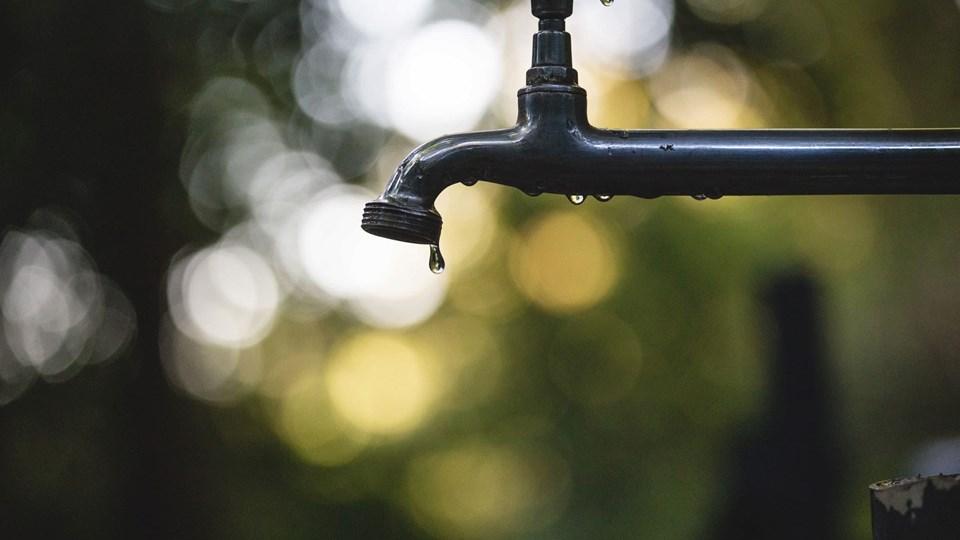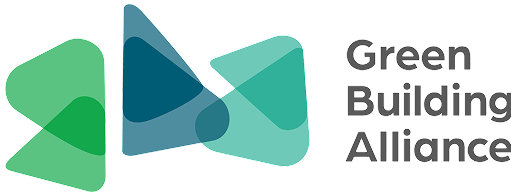Greywater Systems
The average person in the United States uses 70 gallons of water every day for drinking, cooking, bathing, toilet flushing, and lawn watering. In all likelihood, that entire amount is potable water!

In a world where fresh, clean water is becoming a more and more valuable commodity, people are reconsidering their choice to send so much of it into the sewers each day. Greywater systems are one approach to help solve this issue.
Greywater comes from washing machines, bathrooms sinks, and showers, while “dark greywater” from dishwashers or kitchen sinks might also be included. In contrast, wastewater from toilets and urinals is called blackwater. In residential buildings, the majority of water (between 50% and 80%) falls into the greywater category and can be collected for reuse. Toilet flushing, irrigation, and other uses that do not require potable water are perfect applications for greywater.
History
Due to a history of poor waste management and outbreaks of waterborne diseases, on-site wastewater management is perceived as unsanitary and even backward. Most people are much more comfortable with flushing waste away and not seeing it again. Many are not aware, however, that in addition to being inefficient and costly, current wastewater infrastructure poses public health risks of its own.
In Pittsburgh, for example, the first municipal sewers were built in the late 1800s and routed sewage and stormwater directly into the city’s rivers. This dumping was eventually banned, but the sewer system itself stayed much the same. Pittsburgh still uses a combined sewer system: all grades of water are intermixed and treated to the same level, regardless of intended future use.
Large volumes of relatively clean stormwater and greywater are combined with blackwater, resulting in contamination of the whole amount. This water is harder and more energy-intensive to treat than it would have been if kept separate. One of the biggest problems with this kind of outdated infrastructure is how easily it overflows. As little as one-tenth of an inch of rain can be enough added water to exceed sewer capacity and cause an overflow of untreated sewage into the nearest river. When this happens, a combined sewer overflow (CSO) is declared, and residents are advised to avoid contact with river water.
It makes sense, then, that a new strategy should be in order! Not only does greywater use help limit sewer overflows, but it also makes communities more resilient, as they are less dependent on an outside source of freshwater. Unfortunately, few locations allow alternatives such as greywater systems. Some commercial buildings in the Pittsburgh region have been able to install these systems, but the Pennsylvania Department of Environmental Protection does not issue permits for residential greywater use.
For projects that do obtain the necessary permits, the collection and use of greywater can contribute to credits or imperatives in LEED and the Living Building Challenge, among other green building rating systems.
System Types
For all types of greywater reuse, the following guidelines apply:
- Minimize contact
- Never store untreated greywater for more than 24 hours as the organic material it contains will rapidly decompose, causing it to become more hazardous and unpleasant smelling
- When irrigating, do not allow it to pool
- Do not use greywater to irrigate edible root plants
- Label pipes carrying greywater as “Non-Potable Water – Do Not Drink” and label valves to show where the water is going.
When irrigating with greywater, lines should be buried a few inches under the ground’s surface and each outlet should direct water into a mulch basin protected with a mulch shield. For subsurface drip irrigation, conventional drip tubing cannot be used unless water is filtered thoroughly. Emitters designed for greywater are much less likely to get clogged.
Even without a greywater system, greywater can still be siphoned from the shower and directed outside or collected in small amounts to bucket-flush the toilet. Another easy idea is to wash and rinse dishes in dishpans in the sink and then use the collected greywater to water plants. Save unused drinking water or water used for rinsing foods to use as greywater. Similarly, use a bucket in the shower to catch “clear water” that is otherwise wasted while the shower is warming up.
Low-tech systems do not store greywater or treat it in any way. The most basic set-ups route water from a washing machine to the outdoors using a one-inch irrigation line.
Laundry-to-landscape systems have a valve switch that allows water to either be sent outside or to the sewer, but do not require any plumbing alterations. If sent outside, water can be directed to one or more plants. A branched drain system is somewhat more complicated as it uses water from multiple sources, such as laundry, shower, and sinks. Laundry-to-landscape and branched drain systems are gravity-driven.
If the area to be irrigated is uphill from the building providing greywater, a pumped system can be used to pump water to a holding tank and then out to the landscape. One of the most intricate system types is sand filter-to-drip irrigation. Greywater flows to a holding tank and then is pumped through a sand filter to drip irrigation lines. These are fully automated and highly water-efficient systems that clean filters automatically by sending pressurized potable water backward through the filter (to the sewer) to remove debris and can supplement greywater with municipal water as needed.
The design and complexity of a greywater system should fit its specific project site. For example, in cold climates, a system that directs greywater to a greenhouse to avoid frozen pipes (simultaneously allowing for a winter garden!) can be considered. New construction or extensive plumbing remodels have quite a bit more flexibility than retrofits in terms of what is feasible for a greywater system. For projects that produce large volumes of greywater, a manufactured system may be appropriate.
Setting up a system to flush toilets with collected greywater requires major plumbing alterations. Simpler fixtures flush with water from hand washing.
Net-Zero Water
In addition to recycling greywater, some projects incorporate different forms of greywater treatment.
Project teams seeking Living Building certification or other net-zero water goals must consider rainwater and blackwater as well as greywater. The Living Building Challenge encompasses two water-related imperatives:
- Imperative 5: Net-Zero Water – One hundred percent of occupants’ water use must come from captured precipitation or closed-loop water systems that account for downstream ecosystem impact and that are appropriately purified without the use of chemicals.
- Imperative 6: Ecological Water Flow – One hundred percent of stormwater and building water discharge must be managed on-site to feed the project’s internal water demands or released onto adjacent sites for management through acceptable natural time-scale surface flow, groundwater recharge, agricultural use, or adjacent building needs.
Addressing these imperatives requires an integrated, cyclical approach that handles different grades of water appropriately. Supplementing a greywater system with a composting toilet or other on-site blackwater treatment allows projects to be completely separate from a municipal sewer system (if codes allow). There is an increasing number of building owners who can sell electricity back to the grid, but what might it look like if buildings could produce an excess of water, too?
The most common approach to on-site sewage treatment is a constructed wetland in which diverse species (some combination of plants, snails, clams, algae, and fish) filter and break down compounds in water. Individuals can build wetlands, or commercial systems can be installed. Depending on the level of purity needed for future use, treatment systems may include sedimentation, membrane filtration, or UV sterilization components.
Cost and Maintenance
When collecting greywater, avoid contamination from human waste, food scraps, drain cleaners, or other harsh chemicals. Check the ingredients in soaps and detergents to prevent toxic substances from being leached into the soil. Regularly clean filters, pumps, and the greywater holding reservoir to maximize system performance!
Costs vary widely according to system complexity, with laundry-to-landscape systems totaling $100-$250 for materials, branched drain systems around $200-$400, and pumped systems closer to $400-$700. Full installation costs (including materials and labor) for any of these are several times higher. Sophisticated systems such as sand filter-to-drip irrigation cost $7,000-$10,000 for full installation. Various greywater kits can be purchased for under $1,000, and complex manufactured systems run between $2,500 and $9,000. While water savings from the use of greywater can be significant, the payback period depends on the volume of greywater produced, as well as the number of potable water uses that it can replace or supplement.
In cities where water is already scarce (such as Tucson, AZ), rebate programs are popping up to encourage homeowners to install greywater systems. Pennsylvania cities are not to that point yet, but programs such as the Clean Water State Revolving Fund, which provides no- or low-interest loans to fund greywater recycling (and similar) projects in public buildings, may be of help.
Advantages
- Potable water conservation
- Lower water bills
- Decreased load on local sewers
- Potential initiatives to meet LEED or Living Building Challenge criteria
- Reduced energy use and greenhouse gas production from water treatment plants
- Enhanced drought resistance
Regional Examples
David L. Lawrence Convention Center
Phipps Center for Sustainable Landscapes
Related Links
Toward Net-Zero Water
Greywater Action
Greywater Design Manual (PDF)
References
About Greywater Reuse. (n.d.). Greywater Action. https://greywateraction.org/greywater-reuse/
Water Petal Intent. (n.d.). International Living Future Institute. https://living-future.org/lbc/water-petal/
Top banner photo: Water on tap (Unsplash: Luis Tosta)
